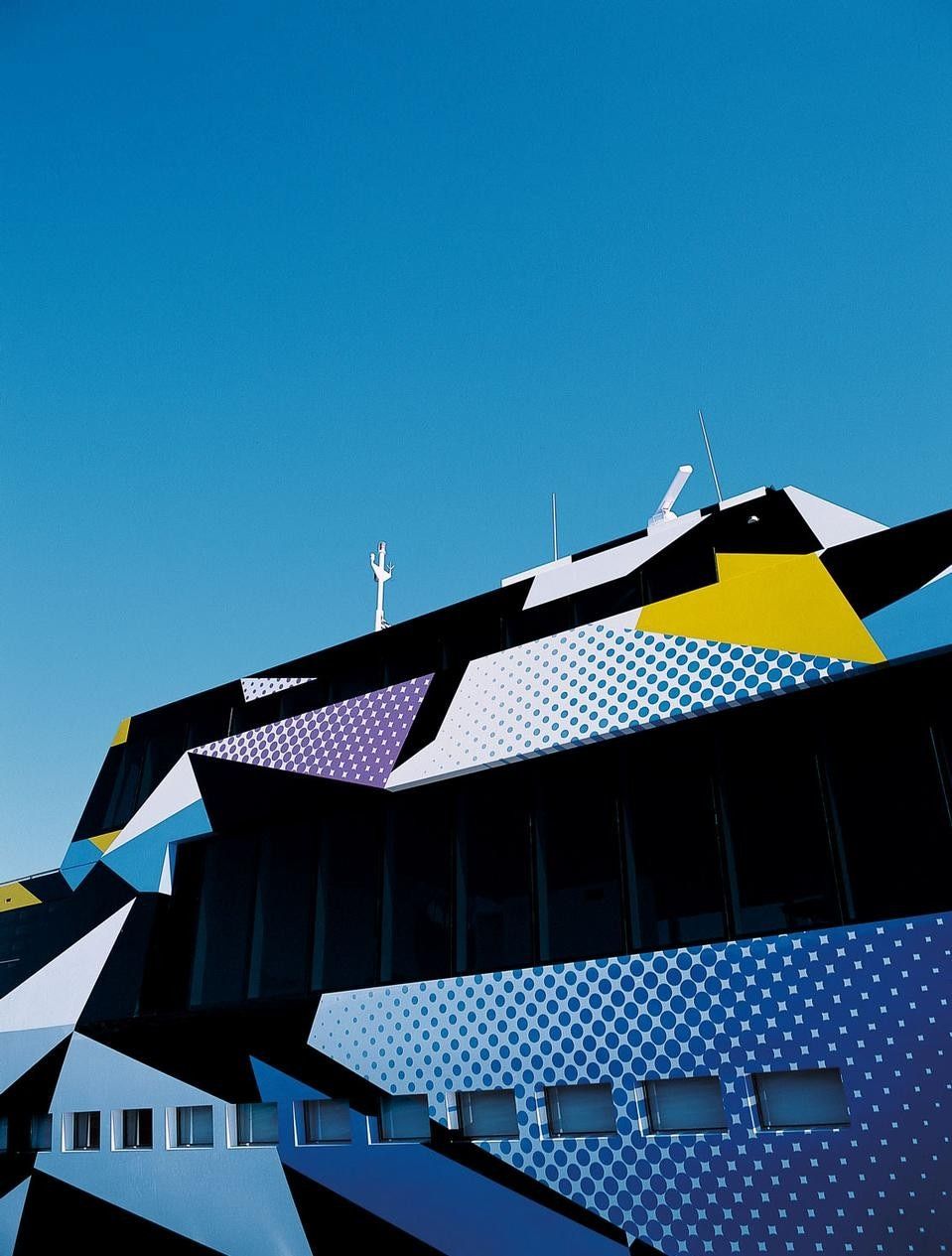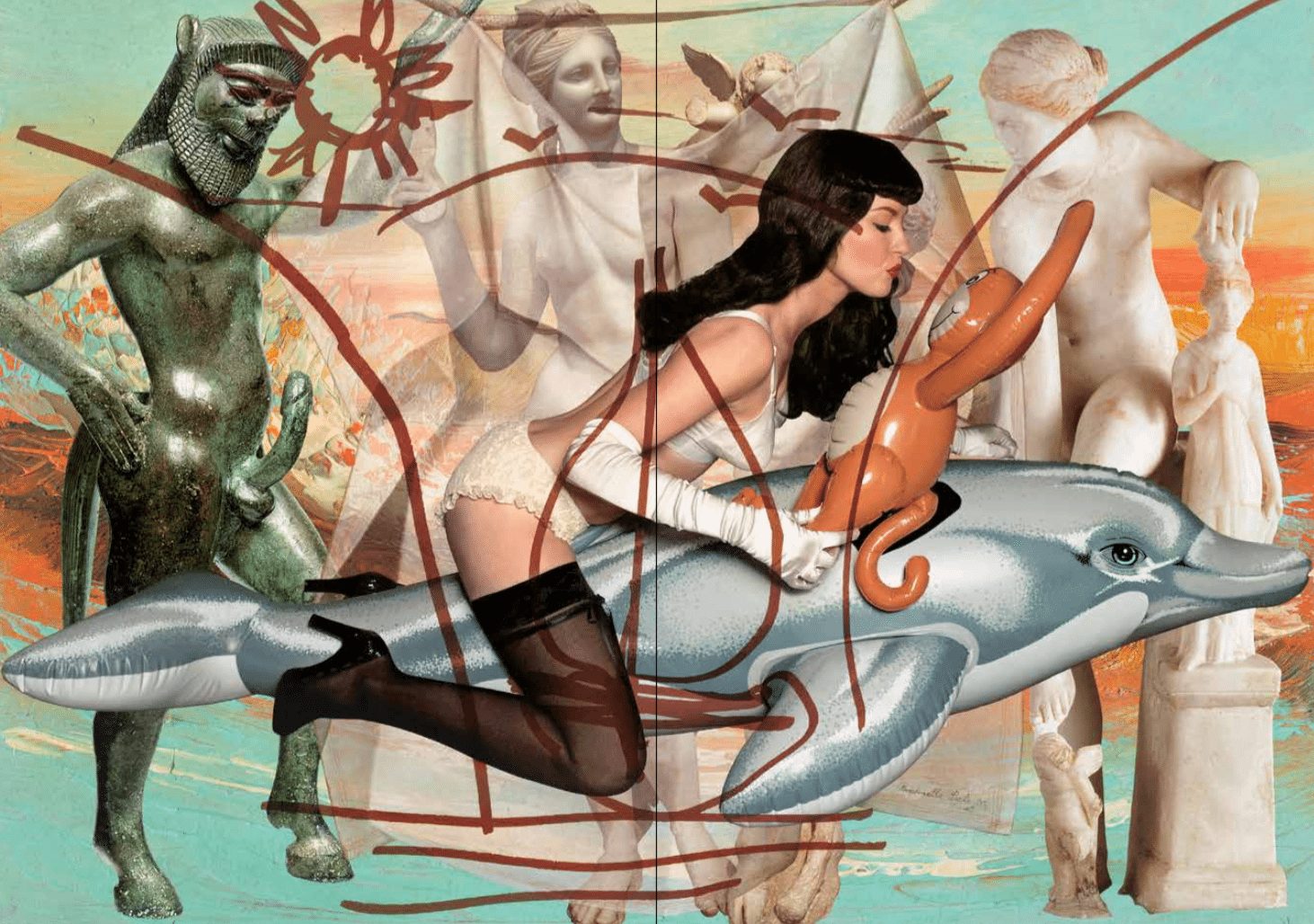CARBON FIBER SUNSET: 032c at the America’s Cup in Bermuda
For the 2017 Louis Vuitton America’s Cup, Robert Grunenberg traveled to the subtropical island of Bermuda for 032c to explore the universe of boat racing, a century’s old sport that has evolved into a high-octane spectacle that collides polo-shirted nostalgia with advanced technology and global economics. Once there, he boarded the fleet of XO Boats – a Finnish company that was selected to be the official media partner of the tournament, one that predates the modern Olympic Games by 45 years.
Battling the salt spray at 45 knots, Grunenberg describes his view from the water:
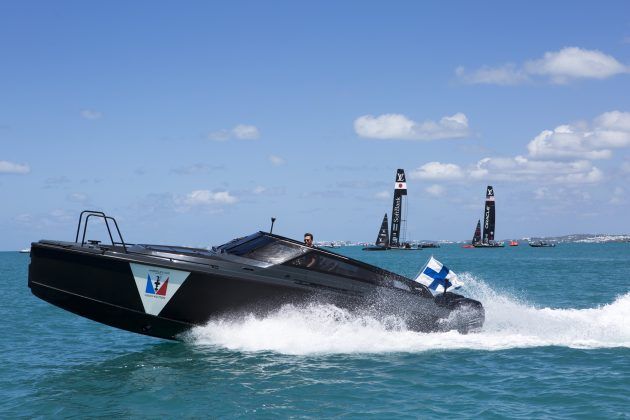
Bermuda, May 2017. As I step out of the airplane that brought me in from New York, I feel like I have travelled through time and space. The Bermuda air smells like flowers, carried by a wave of heat. The mid-century airport is painted in a pale blue and coral rose – the veneer’s patina slightly crumbling. A portrait of Queen Elizabeth II in the immigration hall and red telephone boxes lined up on the street remind me that Bermuda is a British Oversea Territory. The drive to my hotel shows a seemingly endless display of neatly arranged yet lush gardens of golf clubs and suburban housing developments, and I remember a friend saying,” Bermuda feels like a mixture of Palm Springs and Wimbledon in the 1960s.” Did I just blunder into the infamous Bermuda Triangle, the mythical place where planes and boats go to disappear? Did I actually travel through a wormhole, validating quantum physics? The moment I enter the harbor of this year’s America’s Cup, I realize, “No, it is definitely 2017.”
It is the opening day of the world’s oldest sporting tournament in the middle of the Atlantic ocean and I am here to spend a day on the water with the Finnish company XO Boats and report about their world, which is alien to me. I enter the ultra-modern America’s Cup Village on Cross Island, and, again, I feel like I traveled through time. The massive sight, that was especially built in the past two years for this sporting event, is equipped with cutting edge stage design, gigantic screens, and surrounded by the finest and most spectacular motorboats, superyachts, and ocean cruisers. Hundreds of posh sailing enthusiasts on the dock in pastel colored polos, Bermuda shorts, and a type of marina resort skirt, look out at dozens of athletic sailors ambitiously entering their high-tech catamarans. Since 1851, the America’s Cup hosts a tournament that has become a gigantic sailing regatta. Today, it is known as the oldest international sporting trophy. Throughout my short trip to Bermuda, I wonder what makes people invest all this time, energy, and money into a sailing tournament? Each of the six participating sailing teams have been practicing like Olympic athletes over the course of several years. Most of the athletes even moved their families to the island to practice as much as possible on site. Overall, the America’s Cup is by far the most expensive sporting tournament in the world. It costs each team more than 100 Million US Dollars to participate, which surpasses the expenses of the automobile racing of Formula One.
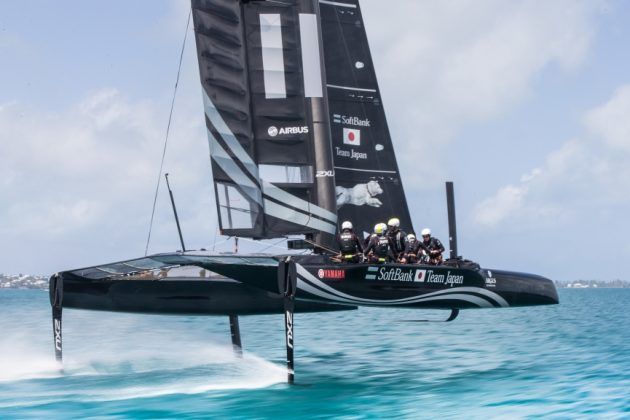
I guess it all comes back to the simple fascination we have of being on the water. As the black-silver helicopters and drones rise dramatically into the air from the dockland to record their film and photo coverage, everyone notes the sailing race is about to kick off. A team of media representatives joins me on the “XO Cruiser,” one of nine models from XO Boats, which the Finnish company transported from the Baltic sea to the subtropical waters of Bermuda.
“OMG,” the woman next to me stutters in amused shock when our boat speeds up to 45 knots [80km/h]. The wind lashes over our heads as the bow smoothly cuts the waves of the shimmering baby blue water. As the boat enters closer into the bay, the speed drops, pulling the massive hulk down, and a panoramic view of the 35th America’s Cup unfolds before us. We come to a stop by a faded red buoy, lining up between the other spectators on the water. The others turn their heads towards us, finger-point and chatter. Maybe because our boat is pitch black and sticks out next to all the bright white cutters, boats, and yachts. XO Boats was chosen to be the official media partner for this year’s America’s Cup. Since its first race in 1851, the America’s Cup itself prides itself in its technical precision and team-oriented and adventurous spirit – elements that are also encapsulated within the DNA of XO Boats. The cooperation means a huge media exposure for the niche, high-end boat manufacturer from Finland. How did this come about?
“I wanted to bring in XO Boats as an element of design and not only a mode of transportation” Julie Sylvester answers, an international curator and Bermudian, who discovered the importance of Finnish design while working at the Hermitage in St. Petersburg. “I think it is a fantastic partnership. Now we have those beautiful, black boats from Finland on the turquoise water of the Bermudian sound,” she says while we sit on a terrace overlooking the coral reef surrounding the island. Sylvester was the one who convinced both parties that it would make sense to involve XO Boats in the context of the long history of Finnish design.
The boats combine functionality with minimalist forms and that je ne sais quois that made Finnish design world-famous by the likes of Alvar Aalto or Ilmari Tapiovaara. “When you go to a restaurant in Finland, you will find that the tables are always far enough from each other so you don’t hear other people talking. Those invisible details are at the heart of Finnish design concepts,” she shares.
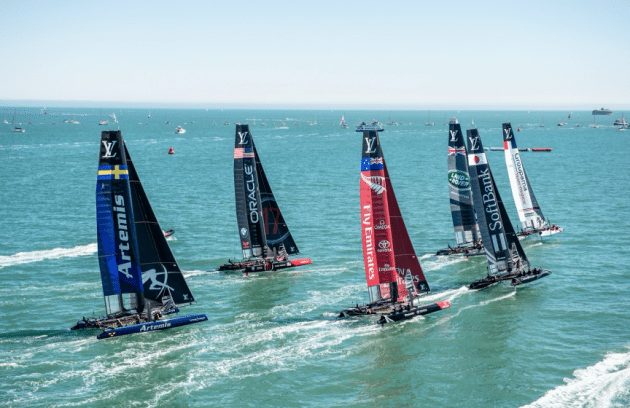
XO Boats was founded in 2009 as a boat for leisure and sporting activities. “While a lot of other boats and yachts remain in the port, waiting for more convenient weather conditions, XO Boats are built in a strong and reliable way to maximize driving and user experience in rough conditions,” says CEO Dan Colliander. Under the supervision of Jarkko Jämsén, head of design, the nine different models of XO Boats have been produced in respect to their main markets: the Baltic Sea and the North Sea. It comes as a surprise to me that the harsh and varied conditions of the Finnish archipelago resemble the ones of the Bermudian sight – a practical reason why XO Boats was chosen for the America’s Cup.
When I return from the sound to the dockyard after the first day of the race, one of the drivers calls XO Boats “a tank on water.” The black color and the bold graphic shapes resemble a military vehicle, creating a sense of safety and power. Everything is designed to be as efficient a possible. Yet the high-end minimalistic interiors and the aerodynamic design give the boat the right amount of artistic allure as well. “If you go to the Düsseldorf Boat Show, the biggest boat fair in the world, you realize everything looks like a boat, except the models from XO Boats. This is because of their perfect design strength,” Timo Nurmilaukas, a board member of XO Boats, shares while we stroll over the docklands.
Some locals joke around by saying that the America’s Cup is the biggest event that happened to the islands since it’s discovery in 1609. It certainly puts Bermuda on the media map for the entire month of June. Every bigger newspaper reports on it daily, ever since the tournament started on May 27. It beams the island onto screens of millions. Bermuda is commonly known as a place of happiness and wealth. There is a saying that every cab driver in Bermuda makes enough money to get two kids through an American university. Tourism has always contributed to the high living standard of the island, and when Hong Kong became part of China, the local economy became an offshore haven for globally operating insurance and finance companies. Next to well known house owners such as Michael Bloomberg, Silvio Berlusconi, or Michael Douglas, the island had a particular density of international celebrities and billionaires coming to Bermuda during the opening days of the cup at the end of May. Some of them, like entrepreneur Larry Ellison, founder of tech company Oracle, are major supporters of the cup. Ellison is CEO of the Oracle Team USA – the team which won the 2013 tournament under the supervision of superstar skipper Jimmy Spithill.
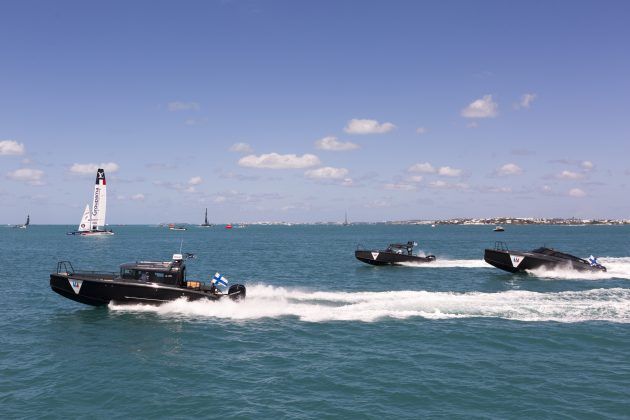
This year’s America’s Cup has been one of the most exciting in its 166-year-long history. The ships are faster than ever, pushing the race to the closest competition among the top teams. Each team sails similar 50ft catamarans that speed up to 45 knots, which is the same top speed that the XO Boats run on.
“We want to give the media a closer look at the competition. XO Boats have an incredible machine. They are a performance-orientated type of boat and fit perfectly into the spirit of the America’s Cup,” five-time America’s Cup winner and CEO of the America’s Cup Event Authority Sir Russell Coutts says about the partnership.
As the first day of the tournament ends with an incredible sunset over the dockland, I start to get a glimpse of understanding for the fascination of boat culture. The sea steers up a romantic cliché of freedom and adventure, and so does the aesthetics of this culture, which was beautifully described by former US President John F. Kennedy. His remarks about the alluring power of the sea at the dinner for the America’s Cup crews in September 1962 might explain what makes people go mad about boats: “It’s because we all came from the sea. And it is an interesting biological fact that all of us have in our veins the exact same percentage of salt in our blood that exists in the ocean, and, therefore, we have salt in our blood, in our sweat, in our tears. We are tied to the ocean. And when we go back to the sea – whether it is to sail or to watch it – we are going back from whence we came.”
